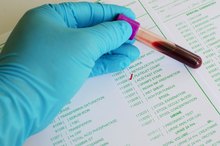6 Main Pressure Points Used for Emergency Medical Purposes
The ability to promptly control bleeding is a critical skill that may determine whether someone loses a limb or potentially his life. Applying direct pressure and elevating an injured site to a level above the heart will suffice for most injuries, but applying pressure to the appropriate pressure point may be necessary for severe bleeding 1. Knowing where these common pressure points lie is crucial in emergencies.
If you are experiencing serious medical symptoms, seek emergency treatment immediately.
Head/Scalp/Facial Injuries
Any injuries to the tissues of the head and scalp tend to bleed profusely, whether superficial abrasions or deeper lacerations. This is due to an abundance of vessels supplying blood to these tissues. Fortunately, these wounds often look worse than they actually are, but they can be difficult to control with direct pressure, especially if smaller, superficial arteries are involved.
For injuries that result in scalp bleeding, apply pressure to the superficial temporal artery, which can be found in the area of the temple on the same side of the head. For wounds on the forehead, pressure can be applied to the supraorbital margin, the bony structure that forms the upper part of the eye socket, on the side of the forehead that is bleeding. This can help decrease blood flow through the supraorbital and supratrochlear arteries. For any bleeding that may occur on the lower half of the face, applying pressure to the angle of the jaw bone down to the area of the chin can significantly decrease bleeding by occluding the facial artery.
- Any injuries to the tissues of the head and scalp tend to bleed profusely, whether superficial abrasions or deeper lacerations.
- For any bleeding that may occur on the lower half of the face, applying pressure to the angle of the jaw bone down to the area of the chin can significantly decrease bleeding by occluding the facial artery.
Upper Extremity Injuries
What Pressure Points Can Kill You
Learn More
Bleeding from any portion of the arms or hands can be reduced or stopped if pressure is applied to the brachial artery. This point can be found by placing several fingers under the upper arm, several inches down from the armpit, then pressing inward until you feel a pulse. If bleeding occurs higher than this location, pressure can be applied to the subclavian artery by placing several fingers above the clavical (collar bone) and directing the pressure downward, toward the back of the chest.
Lower Extremity Injuries
The legs and feet are also susceptible to injury. Because of their location, treatment of bleeding often requires the victim to lie down to adequately elevate the affected extremity above the heart. The primary pressure point for the entirety of the lower extremities is the femoral artery, which can be found on the inside of the thigh near the area of the groin. This artery may require significantly more pressure because of its location deeper beneath the surface. Also, because of its location, care must be taken to avoid contact with areas that may be considered inappropriate, while ensuring that the bleeding can be slowed or halted.
- The legs and feet are also susceptible to injury.
- Because of their location, treatment of bleeding often requires the victim to lie down to adequately elevate the affected extremity above the heart.
Nose Bleeds (Epistaxis)
What to Do If Someone Cuts an Artery?
Learn More
Nose bleeds can not only be cumbersome, they can, in fact, be dangerous depending on the situation. Nose bleeds that occur without trauma may indicate an underlying problem that needs to be addressed by a physician. When treating nose bleeds, firm pressure with a cloth between the fingertips of the thumb, index and middle fingers should be applied to the bridge of the nose. Ice packs or cold packs can be wrapped within the cloth. Watch that blood does not collect in the back of the throat, as this can lead to the blood being swallowed (causing nausea or vomiting), or to blood getting into the airway, which is dangerous. When possible, the victim's head should be elevated and may be tilted slightly backward. The victim should avoid coughing or sneezing during this treatment to keep from disrupting any clotting that may have occurred.
- Nose bleeds can not only be cumbersome, they can, in fact, be dangerous depending on the situation.
- Watch that blood does not collect in the back of the throat, as this can lead to the blood being swallowed (causing nausea or vomiting), or to blood getting into the airway, which is dangerous.
Important "Points" to Remember
Any bleeding that requires use of a pressure point should be evaluated by a physician as soon as possible. Pressure to these points should be applied in increments of no more than 10 minutes at a time, at which point the pressure should be withdrawn and the site evaluated for continued bleeding. The only exception is when the wound or site of injury is still bleeding. Ice packs or cold compresses can often slow bleeding, but these should be applied on a limited basis to avoid further tissue damage. A compress should also never be applied directly to the skin; instead, it should be wrapped in cloth or fabric. Significant bleeding that will not stop, also known as hemorrhaging, should be treated quickly and the victim should be taken to the nearest medical facility immediately. As a last resort, a tourniquet may be applied to an area above the wound site when dealing with an extremity injury. This should always be withheld unless the bleeding cannot be controlled using other methods. Always be aware for signs of internal bleeding such as coughing or vomiting of blood, severe bruising, fractures or swelling of the abdomen 1.
- Any bleeding that requires use of a pressure point should be evaluated by a physician as soon as possible.
- Significant bleeding that will not stop, also known as hemorrhaging, should be treated quickly and the victim should be taken to the nearest medical facility immediately.
Related Articles
References
- Mayo Clinic: Severe Bleeding-First Aid
- EMedicine: Nose Bleeds (Epistaxis)
- American Heart Association. Low Blood Pressure - When Blood Pressure Is Too Low. Updated October 31, 2016.
- Johnson AB, Waheed A, Burns B. Hemorrhage. In: StatPearls. Treasure Island, FL: StatPearls Publishing; Updated May 29, 2019.
- Gopinath R, Sreekanth Y, Yadav M. Approach to bleeding patient. Indian J Anaesth. 2014;58(5):596–602. doi:10.4103/0019-5049.144664
- Hooper N, Armstrong TJ. Hemorrhagic Shock. In: StatPearls. Treasure Island, FL: StatPearls Publishing; Updated May 6, 2019.
- Kasper, Dennis L., Anthony S. Fauci, and Stephen L. Hauser. Harrison's Principles of Internal Medicine. New York: Mc Graw Hill education, 2015. Print.
- Kliegman, Robert M., Bonita Stanton, St Geme III Joseph W., Nina Felice. Schor, Richard E. Behrman, and Waldo E. Nelson. Nelson Textbook of Pediatrics. 20th Edition. Philadelphia, PA: Elsevier, 2015. Print.
Writer Bio
Eugene Elliott is a critical-care paramedic and senior emergency management/public health/environmental analyst. With experience in public safety, public health and incident response, Elliott has been an educator and writer for more than 10 years, affiliated with the American Public Health Association, Virginia Public Health Association and the National Emergency Management Association. He holds degrees in biology, public health/administration and emergency management.








